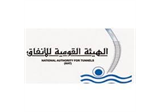MoF Egypt Green Line - Euler Hermes Buyer Credit



The Egyptian railway system is one of the largest in the MENA-Region but suffered severely due to lack of investment and maintenance, and is now marked together with water and energy, a top priority in Egypt’s infrastructure development plans. The Railway Infrastructure Master Plan focuses on...
show moreThis deal page needs more information from those involved.
Tag yourself TAG A COLLEAGUE SUGGEST AN EDITTo view all tranche and pricing information, login or upgrade to a subscription here